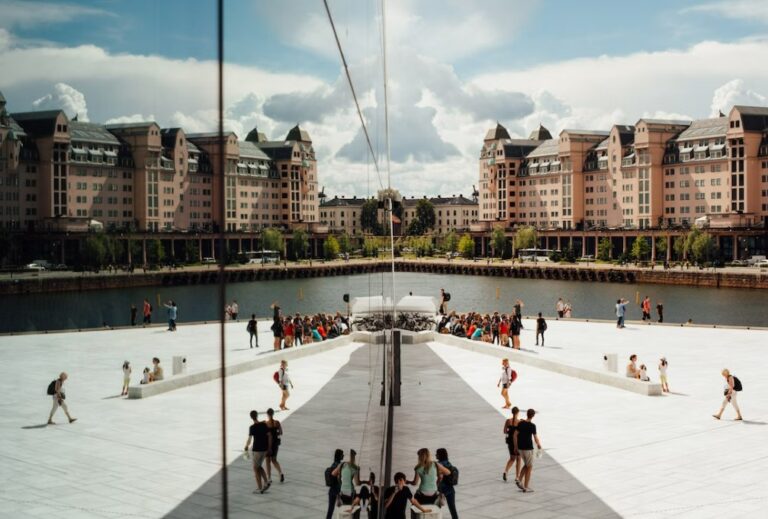Scandinavian nations, encompassing Finland, Denmark, Iceland, Norway, and Sweden, have perennially secured their place among the world’s most blissful countries for numerous years. As a matter of fact, Finland has triumphed in claiming the topmost position for an astounding six consecutive years in 2023. Such astounding consistency in their happiness rankings sparks curiosity, prompting an inquiry into the roots of their unwavering elation.
The prevailing conjectures propose that it emanates from their modest size, ethnic homogeneity, and economic prosperity, or perhaps an intrinsic genetic predisposition to joy.
Notwithstanding, the World Happiness Report refutes these suppositions, dismissing them as erroneous. We shall delve into the factors that synergistically contribute to the sustained characterizing the Scandinavian countries.
Table of Contents
Theories and factors behind Scandinavian happiness
The Scandinavian countries are consistently ranked among the happiest in the world. Many theories have been put forth to explain the high level of Scandinavian happiness, including:
1. Institutional architecture of the Nordic social welfare system
The Nordic countries boast a robust and expansive social welfare system, characterized by minimal corruption, well-established democratic practices, and efficient state institutions. This institutional framework is often attributed to the remarkable contentment experienced by the citizens of these Scandinavian nations.
2. Remarkable level of interpersonal trust
Trust stands as a paramount catalyst for the happiness witnessed in the Nordic regions. These countries enjoy elevated levels of social trust, fostered by a profound sense of mutual understanding among their citizens. The foundations of this trust are further solidified by the presence of top-tier governmental establishments.
3. Economic security and mitigated income disparities
Safeguarding individuals from economic uncertainties and shielding them from financial losses significantly contributes to overall well-being. By virtue of their extensive welfare provisions, the Nordic countries excel in reducing their citizens’ vulnerability to economic insecurities and maintaining low levels of income inequality.
4. Harmonizing work and personal life with core values
Another pivotal aspect enhancing happiness in the Nordic lands lies in striking a harmonious balance between work and personal life while aligning one’s employment with intrinsic core values. The people of these Scandinavian nations are enriched by a closely-knit community, which instills a profound sense of assurance.
Cultural and political similarities of Scandinavian countries
The enchanting complexity of Scandinavian nations encompasses Denmark, Sweden, Norway, Finland, and Iceland. These countries share profound historical, linguistic, and cultural ties, along with numerous political and economic similarities. Culturally, the Scandinavians are renowned for their cooperative, egalitarian, and pragmatic ethos. They prioritize personal well-being, economic prowess, and societal welfare.
Moreover, the Scandinavian nations are united by a parliamentary culture that upholds the virtues of consensus-building and cross-party collaboration. The parliamentary institutions wield significant influence, championing the principles of parliamentary governance and universal suffrage.
The Scandinavian model, a harmonious fusion of social welfare and economic systems, stands as a testament to the collective development of these cultures across the ages. A key ingredient in this model is the profound trust that citizens repose in their government, underpinned by a rich history of collaborative endeavors.
Embodying a synthesis of free-market capitalism and a generous welfare framework, the Scandinavian model embraces several vital components. These include the provision of public social services, strategic investments in human capital-related services, and a robust social safety net to safeguard citizens from adversities.
Challenges to maintaining the Scandinavian model in the current political climate
The Nordic countries also face global challenges such as increasing inequality, polarization, and populism. These challenges can impact social cohesion and the political climate, potentially affecting the implementation and maintenance of the Nordic model
In the global economic oscillations, even the Nordic nations, despite their distinct model, remain susceptible. The fluctuations in the international economic arena can engender trials in preserving the Nordic model’s essence. These fluctuations may profoundly impact economic expansion, employment ratios, and governmental funds.
A pronounced challenge confronting the Nordic model pertains to its aging populace. Ideally, the model thrives on a substantial base of young taxpayers buttressing a smaller contingent of elderly residents who avail of various services.
Another intricate facet that poses a challenge to the Nordic model is the rising influx of immigrants. Although immigration contributes to cultural diversity and potential economic gains, it concurrently strains the welfare system. Navigating the integration of immigrants into the labor market and society demands meticulous attention to ensure the sustainability of the Nordic model.
Moreover, the Nordic countries confront global quandaries encompassing mounting inequality, polarization, and populism. These predicaments have the potential to adversely impact social cohesion and the political climate, thereby influencing the formulation and perpetuation of the Nordic model.
Read more: The countries with the highest salaries: a global overview of prosperity












